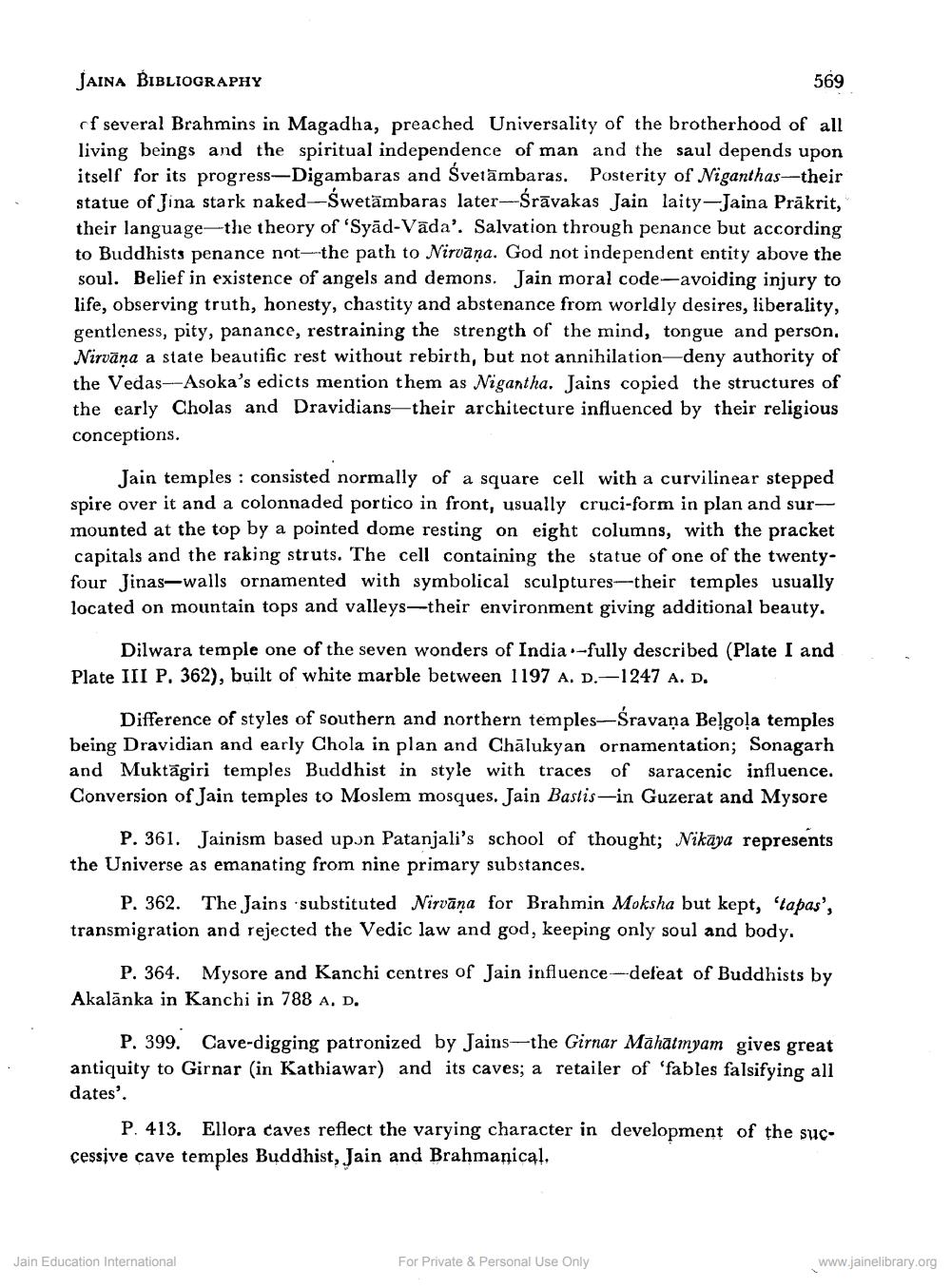________________
JAINA BIBLIOGRAPHY
569
rf several Brahmins in Magadha, preached Universality of the brotherhood of all living beings and the spiritual independence of man and the saul depends upon itself for its progress-Digambaras and Svetāmbaras. Posterity of Niganthas-their statue of Jina stark naked-Śwetāmbaras later-Srāvakas Jain laity-Jaina Prākrit, their language-the theory of 'Syād-Vada'. Salvation through penance but according to Buddhists penance not--the path to Nirvana. God not independent entity above the soul. Belief in existence of angels and demons. Jain moral code-avoiding injury to life, observing truth, honesty, chastity and abstenance from worldly desires, liberality, gentleness, pity, panance, restraining the strength of the mind, tongue and person, Nirvana a state beautific rest without rebirth, but not annihilation-deny authority of the Vedas--Asoka's edicts mention them as Nigantha. Jains copied the structures of the early Cholas and Dravidians—their architecture influenced by their religious conceptions.
Jain temples : consisted normally of a square cell with a curvilinear stepped spire over it and a colonnaded portico in front, usually cruci-form in plan and surmounted at the top by a pointed dome resting on eight columns, with the pracket capitals and the raking struts. The cell containing the statue of one of the twentyfour Jinas-walls ornamented with symbolical sculptures-their temples usually located on mountain tops and valleys—their environment giving additional beauty.
Dilwara temple one of the seven wonders of India.-fully described (Plate I and Plate III P. 362), built of white marble between 1197 A. D.-1247 A. D.
Difference of styles of southern and northern temples-Sravana Belgoļa temples being Dravidian and early Chola in plan and Chālukyan ornamentation; Sonagarh and Muktāgiri temples Buddhist in style with traces of saracenic influence. Conversion of Jain temples to Moslem mosques. Jain Bastis-in Guzerat and Mysore
P. 361. Jainism based upun Patanjali's school of thought; Nikāya represents the Universe as emanating from nine primary substances.
P. 362. The Jains substituted Nirvāṇa for Brahmin Moksha but kept, 'lapas', transmigration and rejected the Vedic law and god, keeping only soul and body.
P. 364. Mysore and Kanchi centres of Jain influence-defeat of Buddhists by Akalānka in Kanchi in 788 A, D.
P. 399. Cave-digging patronized by Jains--the Girnar Mahatmyam gives great antiquity to Girnar (in Kathiawar) and its caves; a retailer of 'fables falsifying all dates'.
P. 413. Ellora caves reflect the varying character in development of the successive cave temples Buddhist, Jain and Brahmanical.
Jain Education International
For Private & Personal Use Only
www.jainelibrary.org




